When I was young and brash and just starting out on my journey I didn't have the manners I have today. For more than a decade, my post about the Stadium Course at TPC Sawgrass said only: "One photogenic hole does not a golf course make. Tricked up. Too hard, front nine is boring. Bermuda grass is impossible to hit out of. If you must, pay the pricey greens fee and take a shot of 17 just to say you did."
I also said for years when asked that I was not a fan of Florida golf. In retrospect, the translation of why I didn't fully appreciate this quintessential Florida course: I suck at golf. My fellow sprayers of the ball will feel my pain when I say that Florida golf is not ideally suited to our games. A loose swing = a lost ball in the water and a long day. Having played the majority of my golf in the Northeast I also have never been able to make the adjustment needed to play on Bermuda grass.
Now that I am older and wiser, I also have a more nuanced view of Florida golf. Saying you don't like Florida golf is like saying you don't like brunettes. Then you meet Scarlett Johansson and reconsider your position. In reality, I've met some beauties over the years in Florida: Calusa Pines, World Woods, Seminole, Streamsong (all courses) and Tiburon. The common elements these courses have are less water, and either manageable Bermuda grass cut short, or non-Bermuda grasses.
I visited the Stadium Course at TPC Sawgrass after a fifteen year absence for the Players Championship and I have to say that I have softened my opinion. While I don't necessarily love the course and wouldn't rush out to play it, I can see its charms. In addition to my being slightly more mature, the course has evolved as well. Some of the nastier features have been softened over time and the collective changes all seem to have been for the better.
The first change you see at TPC Sawgrass is that the old '70s style clubhouse is gone, replaced by this sprawling Mediterranean-style beauty
Pete and Alice Dye designed the Stadium Course and it opened for play in 1982. From the get-go it was designed as a venue for viewing golf and for testing the best players in the world. PGA Commissioner Dean Beman told the Dyes that he wanted a course that would not favor any particular player or style of play. Variety was the order of the day with long, short, and medium length holes called for. The routing was also mandated to be one where no two consecutive holes played in the same direction so that players would constantly have to factor in a different wind.
The site the designers were given was flat, heavily wooded wetlands. Pete Dye said that as soon as they began digging they hit water when they got down to a depth of only a foot and a half. This is not surprising given how close they are to the ocean and the high water table in Northern Florida. Alas, the preponderance of lakes and water throughout the course. Dye notes that he doesn't believe courses like this could be built today because environmental regulations would prohibit the draining of swamps and marshes. The dirt they used to dig out for the lakes was mounded up around various holes, thus creating the "stadium effect." The course is historic in that it was the first such "stadium" course. The term is analogous to a baseball or football stadium, where the concept was to allow spectators unobstructed views of tournament play.
On the top 100 list that I played (Golf Magazine's 2003 list) TPC Sawgrass ranked as #57, a relatively high ranking, putting it above courses such as Maidstone, Somerset Hills, Los Angeles Country Club's North Course, and Yeamans Hall. In my view a course ranked above these beauties should have a lot of outstanding holes, and I didn't find them when I played the course a decade and a half ago.
The second fairway on the Stadium Course at TPC Sawgrass
One of the reasons I didn't particularly like the course the first time I played was that I found the front nine and a couple of holes on the back to be a bit bland and uninteresting. If a course is going to rank above some of the peers I mentioned it shouldn't have a preponderance of weak holes. Exhibit A is the second hole, a par-five, pictured above and below. Could be any club in Florida, right? Or, for that matter, a hole on any course in any state? It is not a particularly distinctive hole, sitting on flat ground.
The 2nd green
The par three third hole, pictured below, isn't bad, but it isn't hugely distinctive either.
The par three third hole
Below is another hole that isn't distinctive, the par-four fourth that has a green next to the requisite lake. You can see that Pete Dye's signature railroad ties were used at TPC Sawgrass. The other design feature used in abundance are not only mounds that spectators can sit on but also mounds that serve as hazards near the greens.
The 4th green sits behind a lake
I won't belabor the point by going through every hole, but as you can surmise, the first fourteen are good, but not really standout golf holes, thus my lack of being gobsmacked by the monster in Ponte Vedra. Anyhow, I'll move on to something more interesting.
The course has changed quite a bit from its early days when it was overly penal, even for tour professionals. Playing in the inaugural event Tom Watson said, "It's a joke, a real joke. They are going to have to flatten out some of the greens." The consensus coming out of the tournament from players was that the course was "unfair and gimmicky." Dave Anderson, the New York Times sports reporter at the time wrote that the 17th was: "A hole only the Marquis de Sade could love." Pete Dye takes pride in designing difficult golf courses. The subtitle of his autobiography Bury Me In A Pot Bunker is: Golf's Most Difficult Designer. He notes with pride that tour players bitched loudly about the course, including Ben Crenshaw, who he quotes in the book as saying, "This is Star Wars golf. This place was designed by Darth Vader." Since it opened the greens have been softened, some of the harsher angles required to hit fairways have been modified, and some of the landing areas have been enlarged to make it less penal.
The green on the 10th hole is typical of the Stadium Course. Good, not great golf holes.
The real action at the Stadium Course is squeezed into the closing holes, and it is these holes that cause the course to be noteworthy and the primary reason why it retains such a high spot in the world rankings. You will have to answer for yourself whether this is justified in total.
The par five 16th hole with a green that hugs the water on the right
It is understood among tour professionals that the toughest finish on tour is the closing three holes at the Stadium Course, summed up in three words: water, water, everywhere. Walking up the sixteenth fairway is like entering the Strait of Messina, to borrow from Homer: the golfer is caught between Scylla and Charybdis. You either hit a shot with precision or lose a ball. A watery grave awaits any shot that is not on its intended line. The approach to the 16th green is guarded along the right side by water with a firm green that can kick balls into the water. Thus, begins the nightmare for any golfer with a hitch in his or her swing. David Feherty calls the stretch of 16-17-18 the 'schizophrenic ward' of the golf course, and he is right.
The beauty (maybe terror is a better word) of the finishing three holes is that it tests every aspect of your game under pressure. It features a green set on the left of the water, followed by one entirely surrounded by water, followed by one set to the right of the water. The finish asks the player if they can pass a stern test and answer the following questions: Can you hit the ball left to right? Right to left? Can you stop a ball on a small, firm green? Can you hit a short iron accurately? In this regard, it is different than most courses that tour professionals play which almost always rewards brute force and length more than accuracy and touch.
The beauty (maybe terror is a better word) of the finishing three holes is that it tests every aspect of your game under pressure. It features a green set on the left of the water, followed by one entirely surrounded by water, followed by one set to the right of the water. The finish asks the player if they can pass a stern test and answer the following questions: Can you hit the ball left to right? Right to left? Can you stop a ball on a small, firm green? Can you hit a short iron accurately? In this regard, it is different than most courses that tour professionals play which almost always rewards brute force and length more than accuracy and touch.
The famous 17th hole at the Stadium Course
The 17th and its island green is synonymous with the Stadium Course. I try not to use the term "signature hole," which isn't applicable to most courses, however, if ever there was a "signature hole" on a course, this is it; it is the defining feature of the layout. Golfers have Alice (not Pete) Dye to thank for the famous island hole; it was her inspiration when they were on site and she envisioned it as the design was shaping up. As much of a pain as the hole is to play, it is clearly great spectacle for fans and riveting entertainment to watch tour players agonize as they try not to embarrass themselves on the short hole.
How hard can it be to hit and hold the 17th green, as it is only a 130 yard shot? Well, pretty hard. More than 120,000 balls end up in the lake each year. I wasn't a math major in college, however, since the course hosts 40,000 rounds of golf a year that would be 328 balls a day that sink to the bottom. Statistically speaking, each player hits three balls into the water! Thus, your answer on the hole's difficulty. It is a very difficult target to hit. If they didn't remove the balls from the water every year there would be so many accumulated after 35 years of play that all the water would have been displaced and there would simply be 4.2 million balls piled in a big hole where the lake used to be.
For the record, when I played the course my first ball hit the back of the green and then bounced into the water. It's rude to ask where my second and third balls went.
For the record, when I played the course my first ball hit the back of the green and then bounced into the water. It's rude to ask where my second and third balls went.
The visual of the golfer standing on the 18th tee is all water
The finishing hole is a par four of 426 yards (for non-tour players) with water bordering the hole from tee to green. If you were looking for a respite after the difficult 17th, you won't find it here. Arguably, it is a harder hole than 17 because of the lurking danger of water on every shot compounded by the severity of the mounding surrounding the small green.
The Stadium Course at TPC Sawgrass undeniable provides for great tournament golf. Tom Doak nailed it when he wrote in his Confidential Guide to Golf Courses, that the course is a "torture track which illustrates the difference between Tour pros and the rest of us." Golfers often want to test themselves to see how their game would stack up against a tour professional or a championship-ready golf course, and the Stadium Course is that ultimate test. This explains why people happily slap down $400-$500 to suffer for a few hours in the heat. My how times have changed. When the course opened the greens fee was $25. Jerry Pate won the first tournament played here and won $90,000 first prize. The winner in 2017 won twenty times the amount: $1,800,000.
The Stadium Course at TPC Sawgrass undeniable provides for great tournament golf. Tom Doak nailed it when he wrote in his Confidential Guide to Golf Courses, that the course is a "torture track which illustrates the difference between Tour pros and the rest of us." Golfers often want to test themselves to see how their game would stack up against a tour professional or a championship-ready golf course, and the Stadium Course is that ultimate test. This explains why people happily slap down $400-$500 to suffer for a few hours in the heat. My how times have changed. When the course opened the greens fee was $25. Jerry Pate won the first tournament played here and won $90,000 first prize. The winner in 2017 won twenty times the amount: $1,800,000.
I still struggle with where the Stadium Course is rated relative to other great courses in the world, however, after my recent visit I give credit where credit is due, and I can understand how the spectacle of the course and the history of the tournament accord it more respect. Is it the type of course that when you walk off the 18th green you want to go immediately back to the first tee like you do at Sand Hills or Yeamans Hall or Bandon Dunes? No. But it takes all types of courses to make an interesting list of the top ranked courses in the world and the historic role the course has played, the tournament history, and the seventeenth hole combine to make it one that is continually in the conversation.
Purely as a matter of preference my tastes don't gravitate toward water-laden Florida golf. Perhaps I would feel different if I were a low single digit handicapper and I could get satisfaction watching eighteen approach shots fly over water and land safely on eighteen greens. For now, give me a cool Scottish breeze and a links course or a slight mist and the dew rising at Bandon Dunes and I'm a happy man.
Purely as a matter of preference my tastes don't gravitate toward water-laden Florida golf. Perhaps I would feel different if I were a low single digit handicapper and I could get satisfaction watching eighteen approach shots fly over water and land safely on eighteen greens. For now, give me a cool Scottish breeze and a links course or a slight mist and the dew rising at Bandon Dunes and I'm a happy man.
On a side note, the PGA Tour runs the Players Championship very well. It is a good, spectator friendly event in a nice environment with the best field of the year. I stayed at the Marriott TPC Sawgrass hotel, which also has come a long way since I stayed there fifteen years ago. I would recommend both.
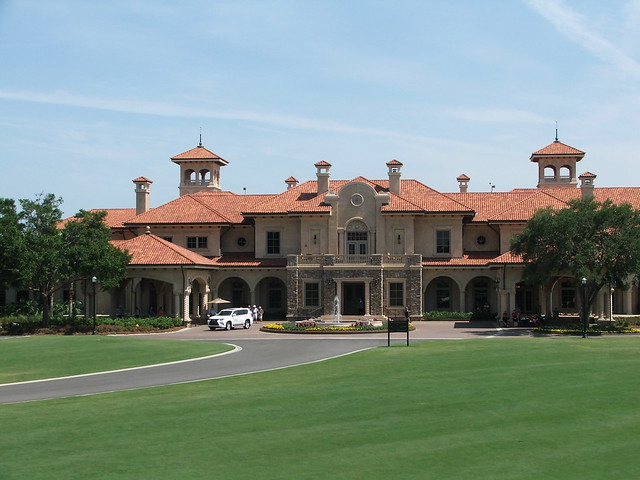
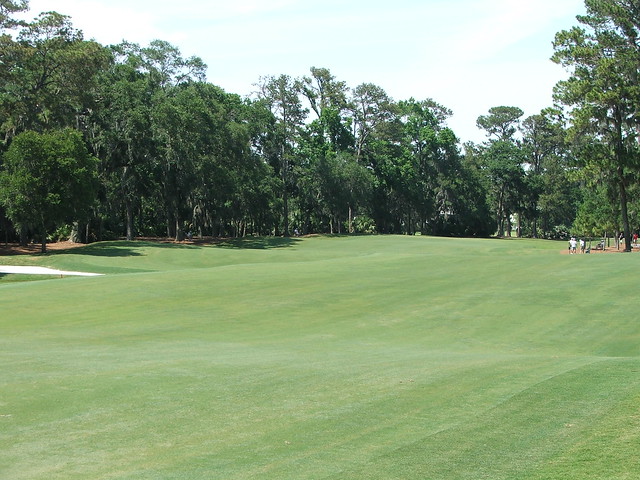
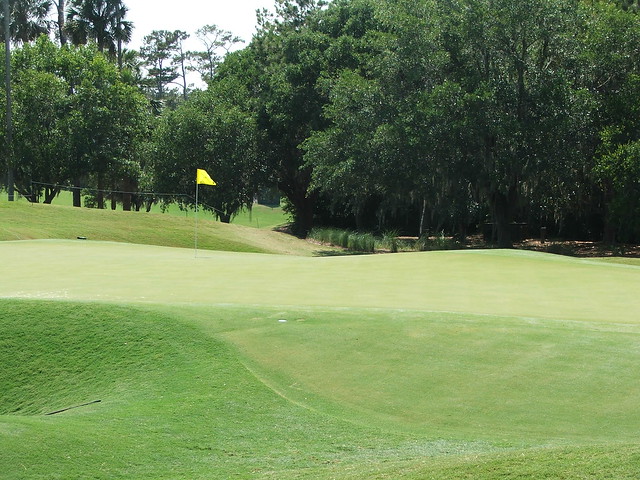
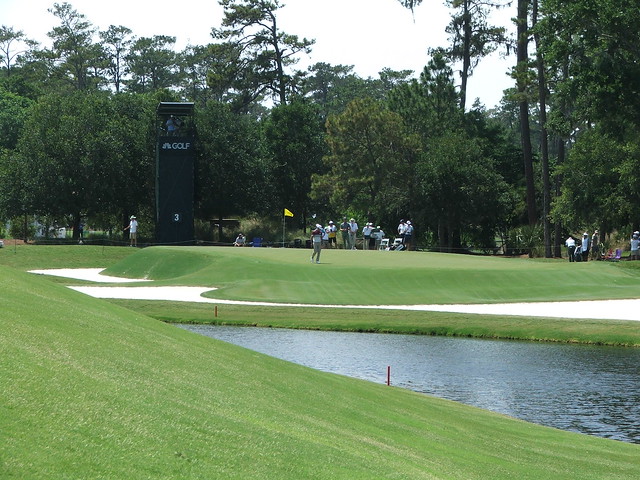
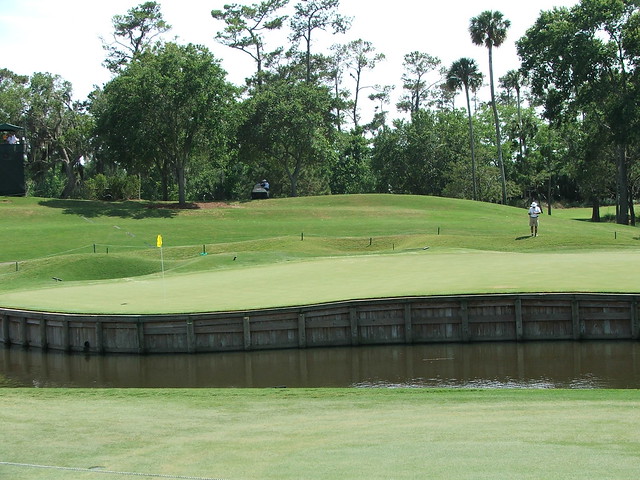
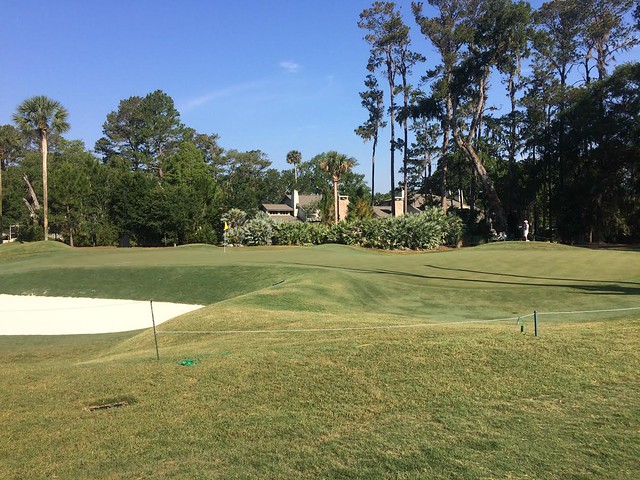
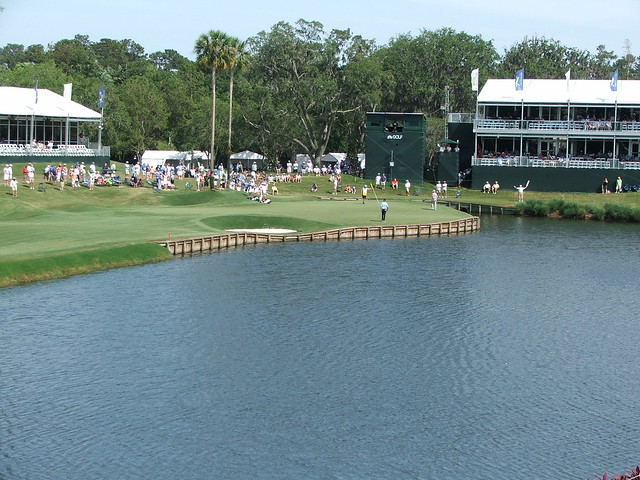
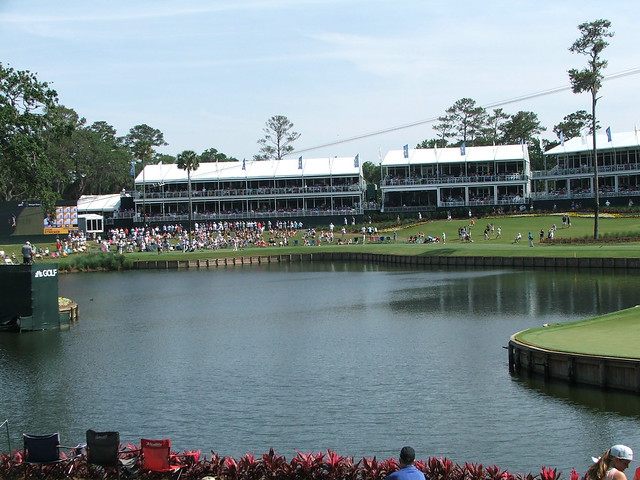
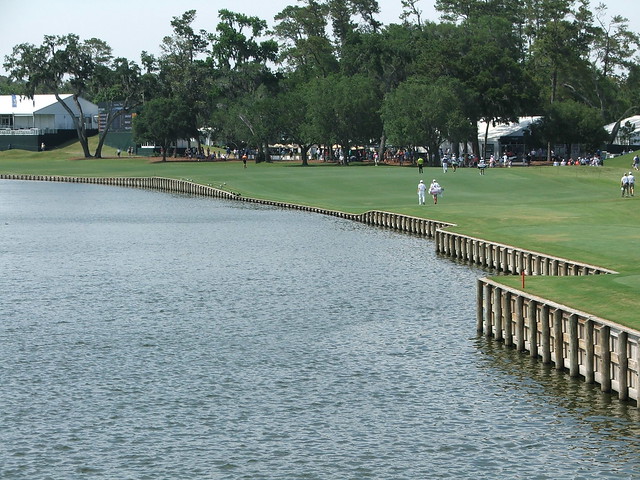




2 comments:
Good to see you continuing your nice posts even after achieving your goal, always a pleasure to read your prose !
(and I think I agree with your opinion on Sawgrass, which I find a bit artificial)
It would be great if you can re-do a post on World Woods.
Post a Comment